HS-123 Page 3
Photos
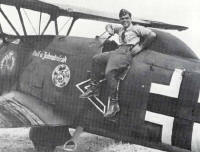
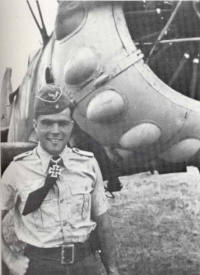 (Ref.
a, pag.119)
(Ref.
a, pag.119)
Josef Menapace, adjudant of the 1./Sch.G
1, preferred the indestructible Hs-123 to the Bf 109E. In August of 1942
Menapace had 650 combat missions behind him.
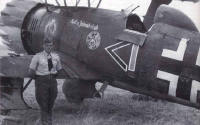
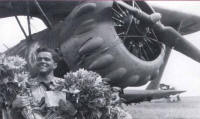 (Ref. b, pags.38 and
39)
(Ref. b, pags.38 and
39)
Hauptman Josef Menapace flew more than
700 combat missions with LG 2, SchlG 1, 2 and got 2 aerial victories. He
was killed in action in 06 October 1943.
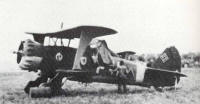 (Ref. a, pag.140)
(Ref. a, pag.140)
From 1942 to 1943, the markings and
identification numbers of the Hs-123 were changed. Planes of the 5./(S)LG
2 with the assault emblem, echelon symbol and fighter-plane triangle
behind the cross.
 (Ref. a, pag.140)
(Ref. a, pag.140)
The emblems are gone, the triangle is
painted over, a bar is painted on as the symbol of the second group; on
the third plane in the picture it extends into the cross emblem.
Meanwhile the "timely" armament consists of SC 50 with Dinort staffs.
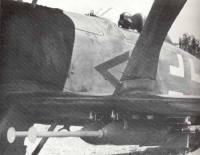 (Ref. a, pag.140)
(Ref. a, pag.140)
This aircraft may have been flown by
Captain Neubert, holder of the Knights Cross.
Closer view of the SC 50 bombs with
Dinort staffs; the bombs also have Jericho pipes to increase the
psychological effect.
Origin of
the Dinorstäb
Many of the British troop casualties
caused by the dive-bombers on Crete came about as a result of a typical
piece of Luftwaffe improvisation. In order to increase the killing power
of their SC 50 and SD 70 bombs against infantry caught out in the open
(which was considered effect enough because the bombs tended to explode
upward on contact with the rocky ground) the Stuka crews adopted a new
fusing system to give the weapon a more lethal lateral spread. This
device was the Dinorstäb, named after the commander of St.G. 2
and which was initiated at this time, as Friderich Lang explained:
"The Dinorstäb was invented
at the middle of May 1941 at the Molai airfield where the I./St.G. 2 were
under Kommodore Oberstleutnant Dinort. The devices were supposed
to detonate the bombs before they reached the ground and scatter their
charge and explosives more effectively. The first trials were with
60cm-long willow sticks which we screwed into the screw hole on the
point of the 50 Kg bombs. The trial area, marked out with a white sheet,
was a wheat field with some olive trees scattered in it. You could easily
see the depth of the shallow crater and the scatter effect around it by
the damage to the wheat.
The willow stick did not work out
since it brook off and did not detonated the bomb before impact. The next
trial was done with even lengths of round metal rod. They also did not
came up to expectations. The rod became embedded in the ground and the
bomb detonated too late. We were successful with the third attempt. On
the end of the metal rods we welded an 8cm-diameter metal disc. The bomb
now detonated at about 30cm above the ground. The scatter effect was
high, as expected.
The rods were, at the beginning, made
in our own workshop wagons and first used when we attacked Crete. Later
they were made by industry under the name of Zunderabstandstäb.
They were also called
Stachelbomben (Stabo) or 'daisy cutter' bombs for obvious reasons"
References:
a) "Stuka" by
Gebhard Aders, Werner Held, 1989 Shiffer Publishing. ISBN:
0-88740-216-X
b) "Wing Masters"
Magazine, Nº 17 July-August 2000
c) "Luftwaffe
1935-1945 Pt.1" - Camouflages & Markings 1 (Eng. Text) by Jaroslaw
Wróbel, 1994 AJ-Press. ISBN: 83-86208-08-2
d) "Luftwaffe
1935-1945 Pt.3" - Camouflages & Markings 3 (Eng. Text) by Robert
Michulec, 1996 AJ-Press. ISBN: 83-86208-49-X

 (Ref.
a, pag.119)
(Ref.
a, pag.119)